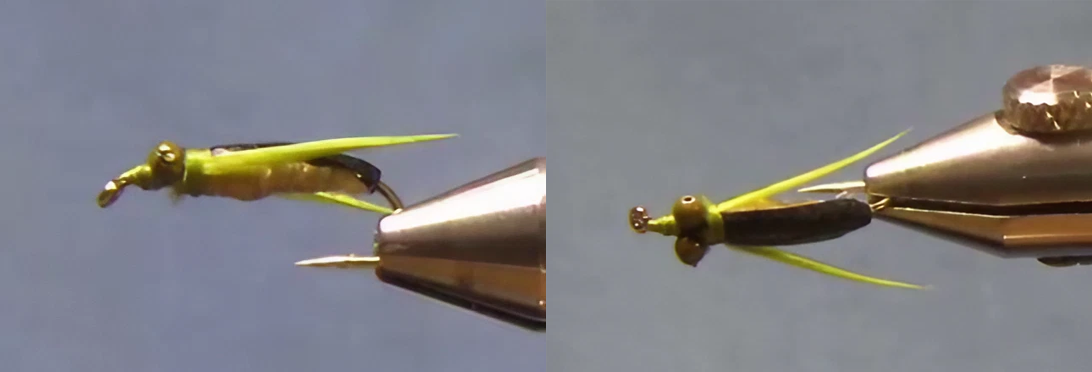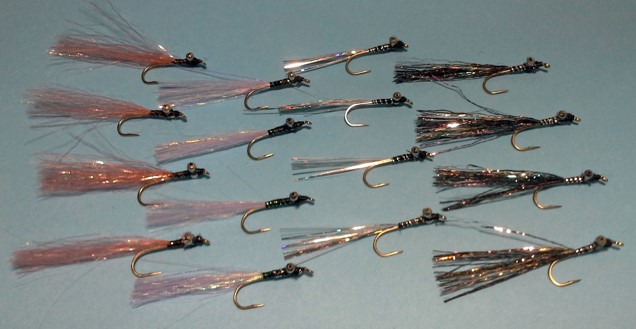If you observe the water in nearly any calm body of water, you’ll see tiny beetle-like creatures constantly ascending to the surface and quickly descending back down. These creatures, known as Corixa, can be found abundantly in various still waters, ranging from small ponds to vast lakes and reservoirs. They play a crucial role as a food source for trout and should not be overlooked by anglers.
Corixidae have finely detailed dark brown or black markings on their wings, four elongated hind legs resembling oars, which is why they are often called “water boatmen.” Their front legs have scoop-like tips, and their triangular heads are equipped with short, triangular mouthparts.
Corixidae primarily inhabit slow-moving rivers, ponds, and even some household pools. They belong to the largest group of aquatic bugs and are sometimes mistaken for backswimmers (Hemiptera: Notonectidae) due to their similar overall shape. However, backswimmers swim upside down in the water and have wings that are lighter than their leg area.
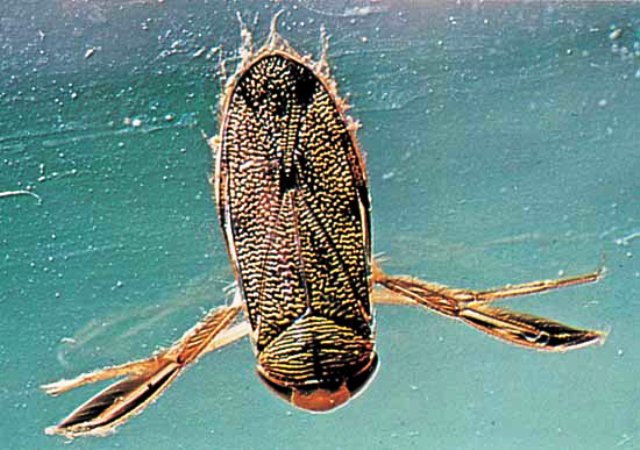
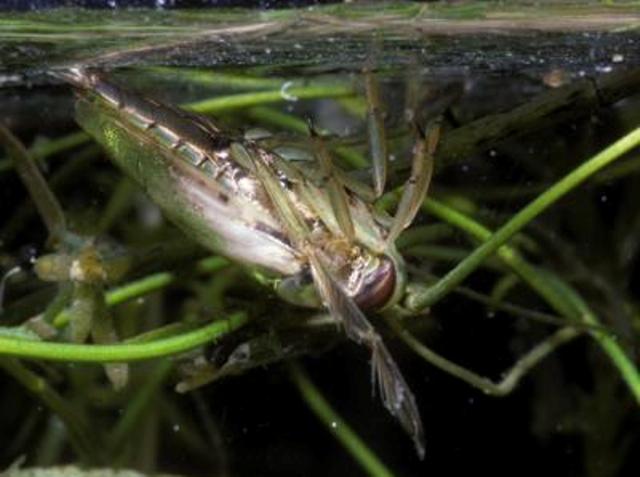


Up close, Corixa is a visually striking creature, boasting dark brown or black dashes and gold bands on its back. Its air supply, which appears as a small bubble beneath its abdomen when fully inflated, resembles a bead of mercury held between its legs.
Water boatmen are good swimmers when they want to be, and lazy bottom bouncers when they don’t, hence many Water Boatman patterns use a bead head for weight. Paul Fedeles’ Water Boatman variant uses bead chain eyes, lead-free wire for weight, olive Zlon, an turkey biots for the legs.
Click here to read how to fish with the Water Boatman.
Materials
- Hook: 2x size 12
- Thread: White woolly nylon and olive 14/0
- Eyes: Olive of black bead chain
- Wing case: Black bug back
- Dubbing: Olive Z-lon
- Legs: Green turkey biots.
- Weight: 10 turns of .015 lead-free wire.
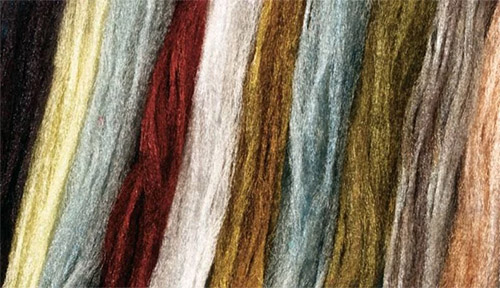
Tying Instructions
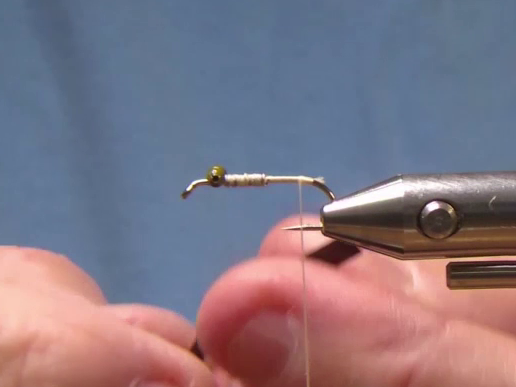
- Tie on the bead chain eyes.
- Tie on the wire.
- Cover the hook with thread, forcing the wire against the bead chain eyes.
- Tie in the black bug back at the bend of the hook.
- Make a small bulb at the bug back tie-in point.
- Whip finish and cut the thread.


- Tie in the olive thread.
- Tie in the Zlon dubbing or strip.
- Wrap a fairly thick body with the Zlon.
- Tie the Zlon off behind the chain eyes.
- Bring the bug back up to the eyes and tie it off, making sure it is on top of the hook.
- Tie in a green biot on both sides of the body.
- Wrap a fairly thick body with the Zlon.
- Make a large neck.
- Finish the head and whip finish or half hitch a couple of times.
- Trim the biots.
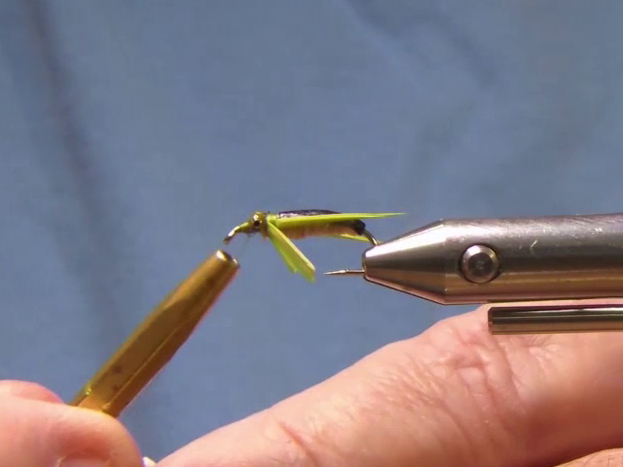
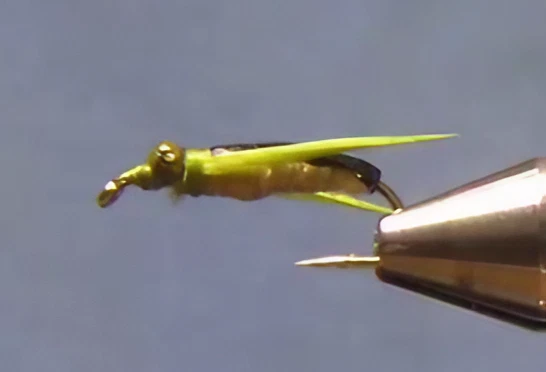
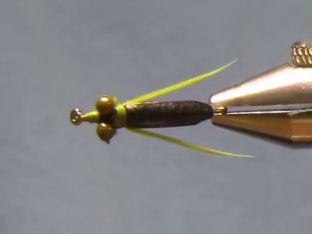
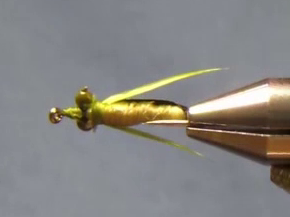
Fly Fishing Boatman – Presentation
Depending on water depth and your desired presentation, you can utilise either a floating or sinking line when fishing with water boatmen patterns.
Floating Line Approach

Employ a short leader/tippet combo in waters up to six feet deep, using tippet sizes ranging from 4x to 6x.
To present the fly below the surface, incorporate sinking dressing, a sinking tippet, or a weighted fly (the Fedeles Variant incorporates lead-free wire for added weight).
Attach sufficient tippet to enable the fly to reach the lake bottom, cast it into the shallows, allow it to settle, and retrieve it to mimic a boatman rising to the surface. Move the fly with quick 2-4 inch jerks per second, pausing every five to ten jerks for two to three seconds to replicate the momentary stun observed during boatman migratory flight crashes. When you notice this behaviour, cast to rising fish, pause briefly, and then retrieve.
Sinking Line Approach
Opt for a slow sinking line (type I or II) with a short leader and 4x to 6x tippet.
To imitate the swim back down with an air bubble, coat the fly, leader, and a few feet of the wet line with floatant. Cast where you suspect fish to be, allowing the undressed portion of the line to sink until it begins pulling the fly under. Then, retrieve with short jerks to simulate the fly’s struggle back down with an air bubble. Pause every five to ten jerks to make the fly float back towards the surface. The boatman is most susceptible just after it acquires an air bubble, so be prepared, as trout often strike the fly near the surface or as it descends.
